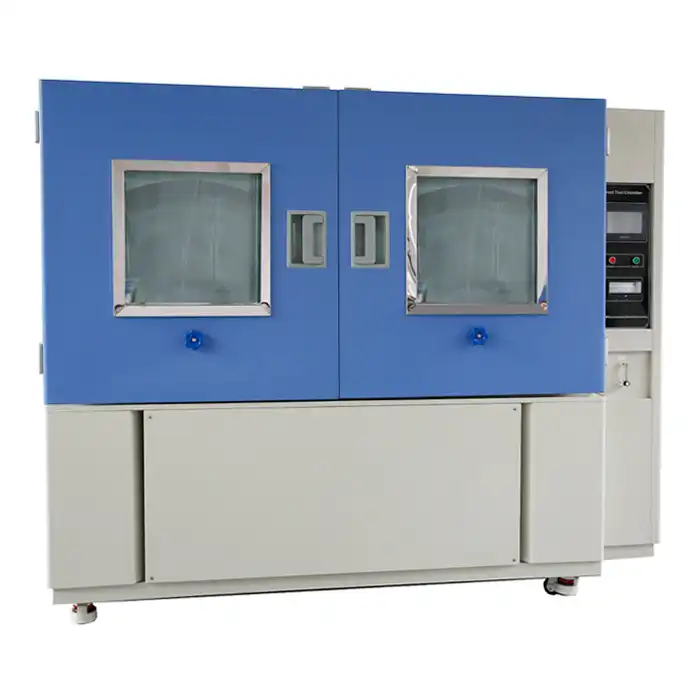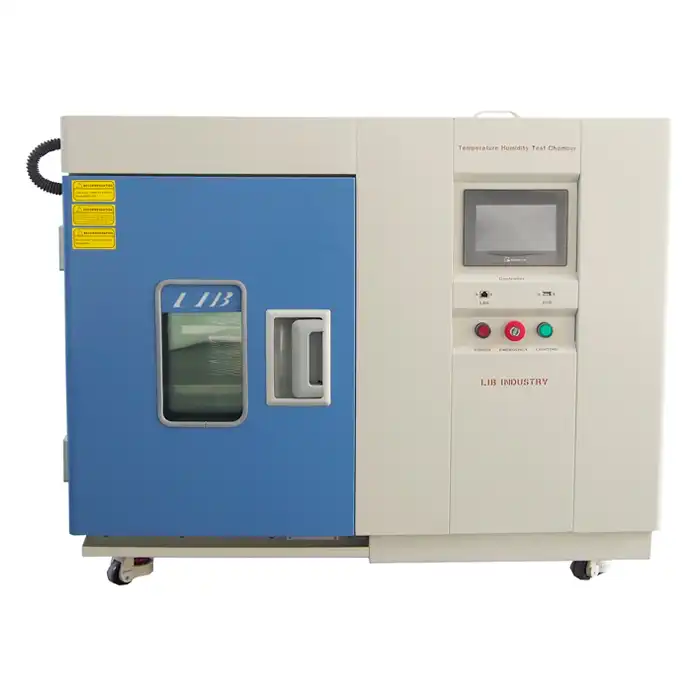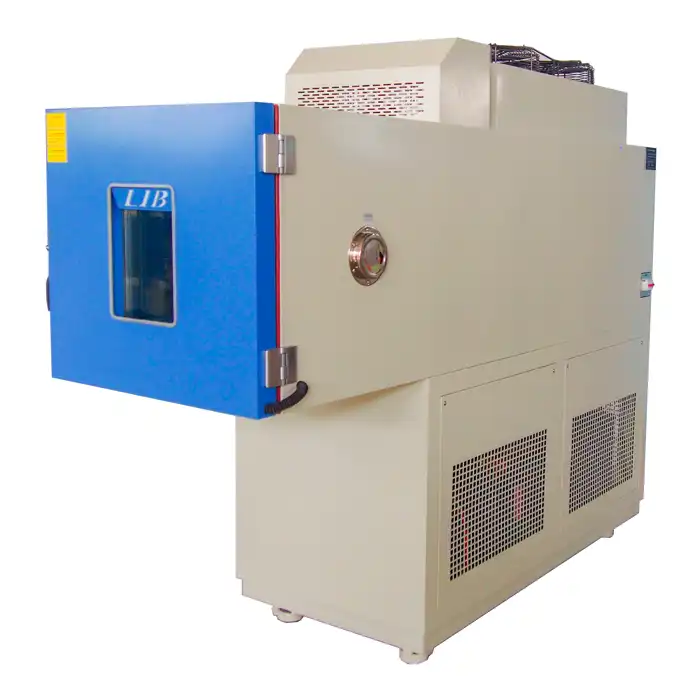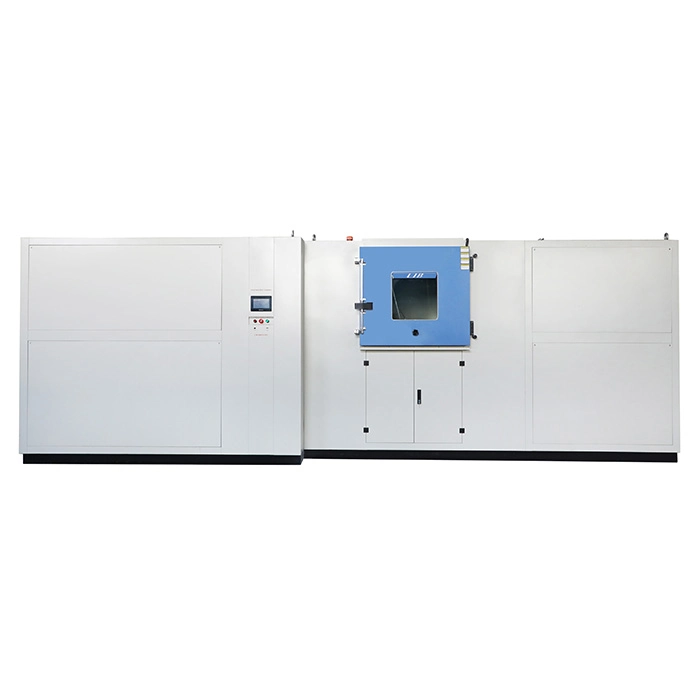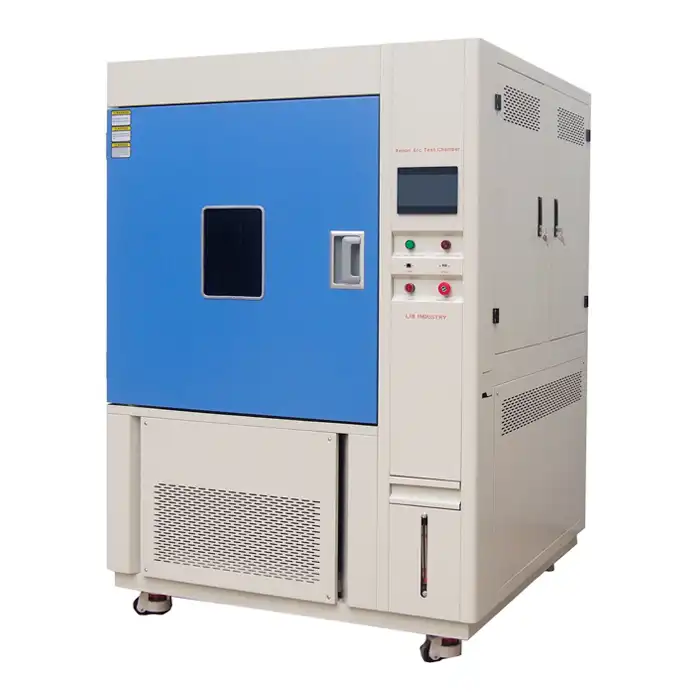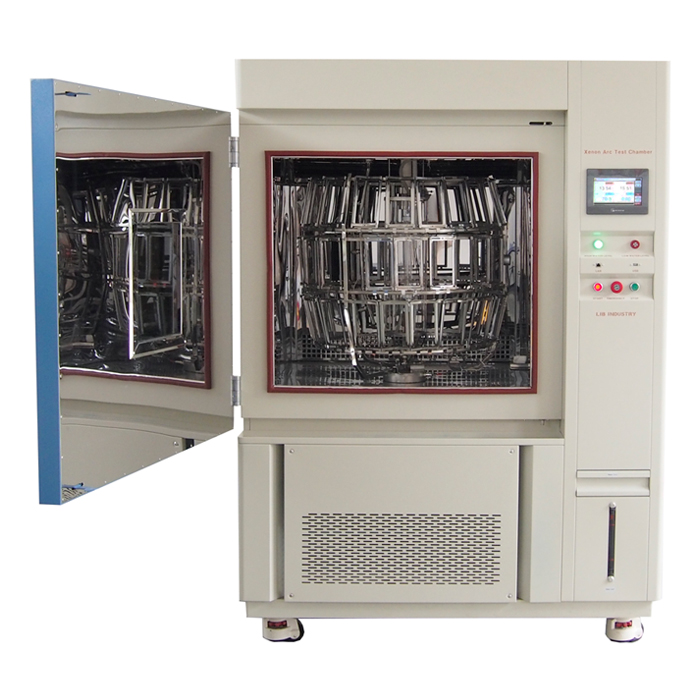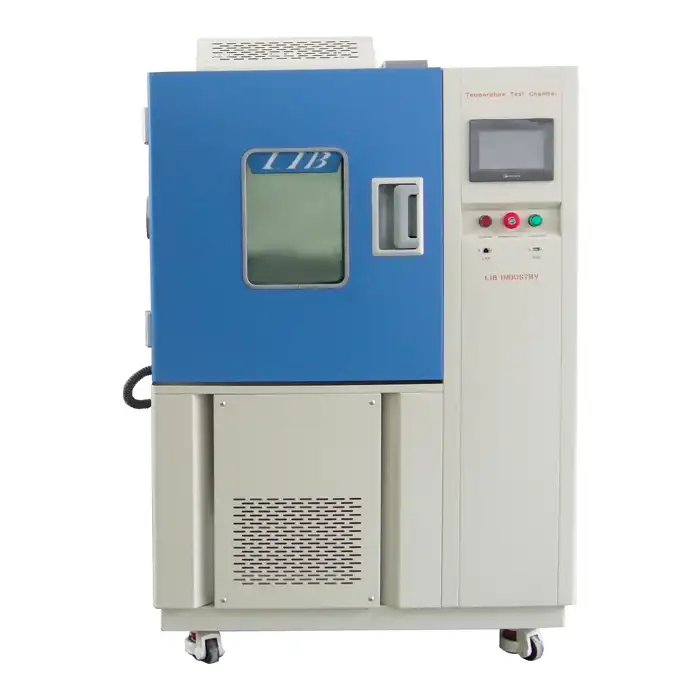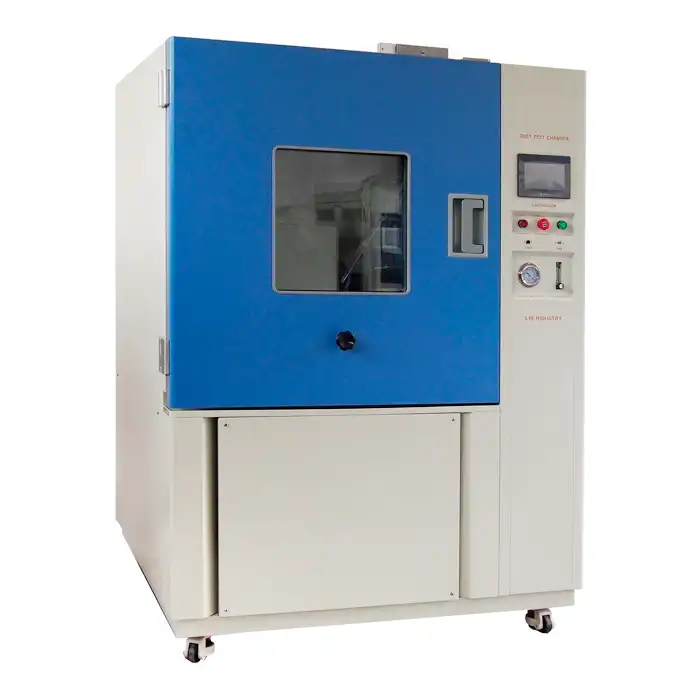What is the ASTM standard for accelerated weathering?
The ASTM standard for accelerated weathering is a comprehensive set of guidelines and procedures established by the American Society for Testing and Materials (ASTM) to simulate and evaluate the effects of environmental factors on materials. Specifically, ASTM G154 is the primary standard for operating fluorescent ultraviolet (UV) lamp apparatus for exposure of nonmetallic materials. This standard outlines the methodology for using accelerated weathering testers and weathering chambers to replicate long-term outdoor exposure conditions in a controlled laboratory setting. By following these guidelines, manufacturers and researchers can assess the durability and performance of various materials under simulated weathering conditions, allowing for faster and more reliable product development and quality assurance processes.
Understanding Accelerated Weathering and ASTM Standards
The Importance of Accelerated Weathering Testing
Accelerated weathering testing plays a crucial role in product development and quality assurance across various industries. By subjecting materials to simulated environmental conditions, manufacturers can predict how their products will perform over time when exposed to natural elements. This process helps identify potential weaknesses, improve product durability, and ultimately enhance customer satisfaction.
Accelerated weathering testers and weathering chambers are designed to replicate the effects of sunlight, moisture, temperature fluctuations, and other environmental factors in a controlled laboratory setting. These devices allow researchers to compress years of natural weathering into a matter of weeks or months, providing valuable insights into material degradation and performance.
Overview of ASTM Standards for Accelerated Weathering
The American Society for Testing and Materials (ASTM) has developed several standards related to accelerated weathering testing. These standards provide guidelines for test methods, equipment specifications, and data interpretation. Some key ASTM standards for accelerated weathering include:
- ASTM G154: Standard Practice for Operating Fluorescent Ultraviolet (UV) Lamp Apparatus for Exposure of Nonmetallic Materials
- ASTM G155: Standard Practice for Operating Xenon Arc Light Apparatus for Exposure of Non-Metallic Materials
- ASTM D4329: Standard Practice for Fluorescent Ultraviolet (UV) Lamp Apparatus Exposure of Plastics
- ASTM D4587: Standard Practice for Fluorescent UV-Condensation Exposures of Paint and Related Coatings
These standards provide a framework for conducting consistent and reliable accelerated weathering tests across different laboratories and industries.
The Role of ASTM G154 in Accelerated Weathering
ASTM G154 is the primary standard for operating fluorescent ultraviolet (UV) lamp apparatus for exposure of nonmetallic materials. This standard outlines the procedures for using accelerated weathering testers equipped with fluorescent UV lamps to simulate the damaging effects of sunlight and moisture on various materials. Key aspects covered by ASTM G154 include:
- Apparatus specifications and requirements
- Test specimen preparation and mounting
- Exposure cycles and conditions
- Monitoring and control of test parameters
- Data collection and reporting
By adhering to ASTM G154, manufacturers can ensure that their accelerated weathering tests are conducted in a standardized and reproducible manner, allowing for meaningful comparisons and reliable results.
Key Components and Procedures in ASTM G154
Apparatus Specifications and Requirements
ASTM G154 provides detailed specifications for the accelerated weathering tester apparatus. These specifications ensure that the equipment used for testing meets the necessary standards for accurate and reliable results. Some key components of the apparatus include:
- Fluorescent UV lamps: These lamps are designed to simulate the UV portion of natural sunlight. ASTM G154 specifies the types of lamps that can be used, including UVA-340 and UVB-313 lamps.
- Specimen mounting system: The apparatus must have a proper mounting system to hold test specimens in place during exposure.
- Temperature and humidity control: The weathering chamber should be equipped with systems to regulate temperature and humidity levels according to the specified test conditions.
- Irradiance control: The apparatus should have the capability to monitor and control the UV irradiance levels during testing.
- Water spray system: For tests that include moisture exposure, the apparatus should have a water spray or condensation system.
These specifications ensure that the accelerated weathering tester can accurately simulate environmental conditions and provide consistent results across different testing facilities.
Test Specimen Preparation and Mounting
Proper preparation and mounting of test specimens are crucial for obtaining accurate results in accelerated weathering tests. ASTM G154 provides guidelines for:
- Specimen size and shape: The standard specifies recommended dimensions for test specimens to ensure uniform exposure and ease of handling.
- Surface preparation: Depending on the material being tested, specific surface preparation techniques may be required to ensure representative results.
- Mounting techniques: The standard outlines proper methods for securing specimens within the weathering chamber to prevent unintended shading or exposure variations.
- Replication: ASTM G154 recommends using multiple specimens for each material or condition being tested to account for variability and ensure statistical significance.
By following these guidelines, researchers can minimize variability and ensure that test results accurately reflect the material's performance under simulated weathering conditions.
Exposure Cycles and Conditions
One of the most critical aspects of ASTM G154 is the specification of exposure cycles and conditions. These parameters determine how the test specimens are subjected to simulated weathering factors. Key elements include:
- UV exposure: The standard defines various cycles of UV exposure, including continuous exposure and alternating light and dark periods.
- Temperature control: ASTM G154 specifies temperature ranges for different test cycles, typically including both elevated and ambient temperature exposures.
- Moisture exposure: Depending on the test cycle, specimens may be exposed to condensation or water spray to simulate the effects of rain or dew.
- Cycle duration: The standard provides guidance on the duration of exposure cycles, which can range from a few hours to several days, depending on the specific test requirements.
By carefully controlling these exposure conditions, accelerated weathering tests can provide a more accurate representation of long-term environmental effects on materials.
Interpreting Results and Applying ASTM G154 in Practice
Evaluating Material Performance
After completing the accelerated weathering test according to ASTM G154, it's essential to properly evaluate the material's performance. This evaluation typically involves:
- Visual inspection: Examining specimens for visible signs of degradation, such as color changes, surface cracking, or loss of gloss.
- Physical property testing: Conducting tests to measure changes in mechanical properties, such as tensile strength, elongation, or impact resistance.
- Chemical analysis: Assessing changes in chemical composition or structure that may have occurred due to weathering exposure.
- Optical measurements: Quantifying changes in color, gloss, or other optical properties using specialized instruments.
- Comparison to control specimens: Evaluating the degree of change by comparing exposed specimens to unexposed control samples.
By thoroughly analyzing these factors, researchers can gain valuable insights into how materials perform under simulated environmental conditions and predict their long-term durability in real-world applications.
Correlation with Natural Weathering
While accelerated weathering tests provide valuable data in a relatively short time frame, it's important to understand their limitations and correlation with natural weathering processes. ASTM G154 acknowledges that accelerated tests may not always perfectly replicate natural weathering effects. Factors to consider include:
- Spectral distribution: The UV lamps used in accelerated weathering testers may not exactly match the spectral distribution of natural sunlight.
- Cycling effects: The rapid cycling between different exposure conditions in accelerated tests may produce different results compared to the gradual changes experienced in natural weathering.
- Environmental factors: Some environmental factors, such as pollutants or biological agents, may not be adequately represented in accelerated weathering tests.
To address these limitations, it's often beneficial to conduct parallel natural weathering studies alongside accelerated tests to establish correlations and validate results.
Applying ASTM G154 in Product Development and Quality Assurance
ASTM G154 plays a crucial role in product development and quality assurance processes across various industries. Some practical applications include:
- Material selection: Using accelerated weathering tests to compare the performance of different materials and select the most suitable option for a given application.
- Product optimization: Iteratively testing and refining product designs to improve durability and weather resistance.
- Quality control: Implementing accelerated weathering tests as part of routine quality assurance procedures to ensure consistent product performance.
- Warranty validation: Using test results to support product warranty claims and establish realistic expectations for product longevity.
- Regulatory compliance: Meeting industry-specific requirements for weathering resistance and durability.
By integrating ASTM G154 testing into their processes, manufacturers can develop more reliable products, reduce the risk of premature failures, and enhance customer satisfaction.
Conclusion
ASTM G154 serves as a cornerstone in the field of accelerated weathering testing, providing a standardized approach to evaluating material performance under simulated environmental conditions. By utilizing accelerated weathering tester and weathering chambers in accordance with this standard, manufacturers and researchers can gain valuable insights into product durability and longevity. While accelerated weathering tests have limitations, they remain an indispensable tool for product development, quality assurance, and material selection across various industries. As environmental concerns and product performance expectations continue to evolve, the importance of ASTM G154 and related standards in ensuring reliable, long-lasting products will only grow.
Contact Us
Are you looking to enhance your product development process with state-of-the-art accelerated weathering testing? LIB Industry specializes in providing turn-key solutions for environmental testing, including cutting-edge accelerated weathering testers and weathering chambers. Our expert team can help you implement ASTM G154 standards and optimize your testing procedures for improved product performance and reliability. Contact us today at info@libtestchamber.com to learn more about our comprehensive environmental testing solutions and how we can support your specific needs.
References
1. ASTM International. (2016). ASTM G154-16: Standard Practice for Operating Fluorescent Ultraviolet (UV) Lamp Apparatus for Exposure of Nonmetallic Materials.
2. Grossman, G. W. (1977). Correlation of laboratory to natural weathering. Journal of Coatings Technology, 49(633), 45-54.
3. Pickett, J. E., & Gardner, M. M. (2005). Reproducibility of Florida weathering data. Polymer Degradation and Stability, 90(3), 418-430.
4. Wypych, G. (2013). Handbook of material weathering. Elsevier.
5. Ketola, W. D., & Grossman, D. (1994). Accelerated and outdoor durability testing of organic materials. ASTM International.
6. Andrady, A. L., Hamid, S. H., Hu, X., & Torikai, A. (1998). Effects of increased solar ultraviolet radiation on materials. Journal of Photochemistry and Photobiology B: Biology, 46(1-3), 96-103.



